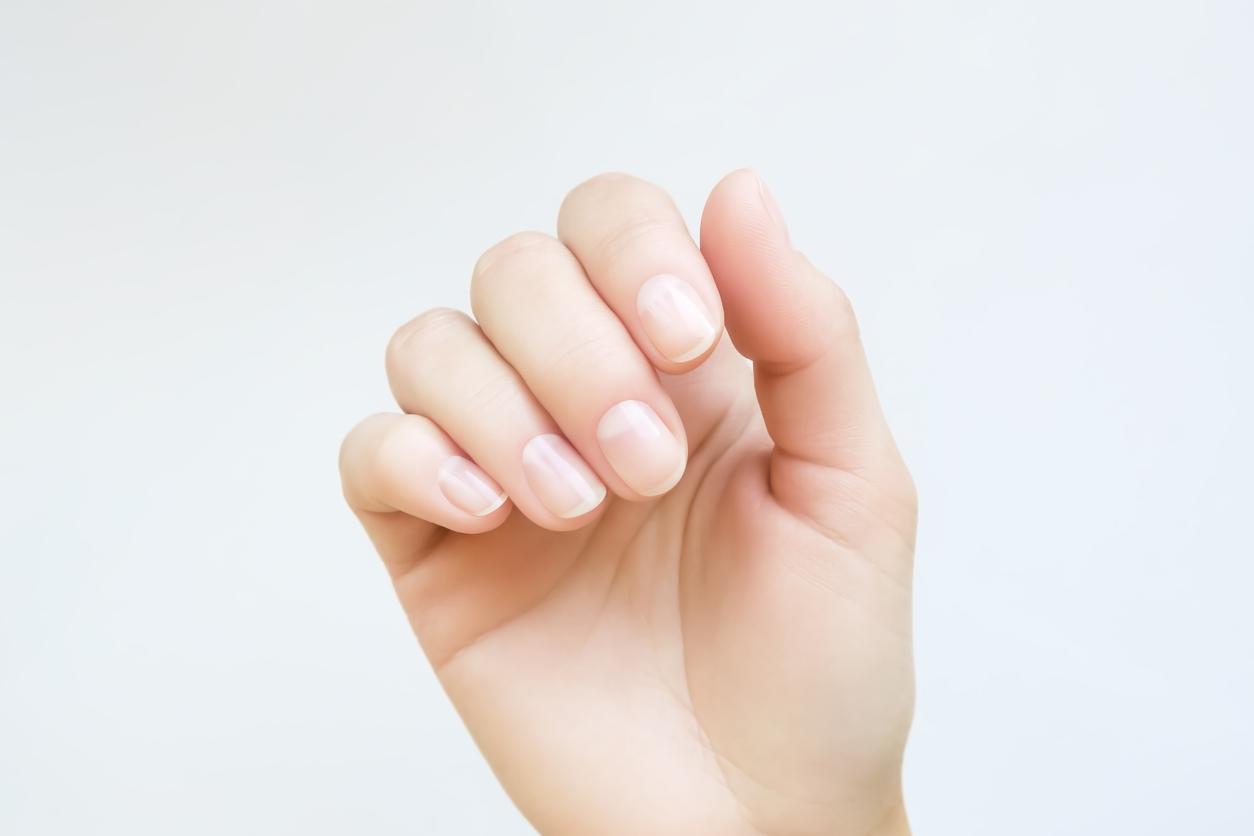Despite their apparent strength …
Our nails are no stronger than our skin or our hair. Like them, they weaken and change in appearance when we get sick or lack vitamins. And they sometimes suffer from inappropriate care: too energetic manicure, application of varnish that leaves stains …
The most frequent concern? They break for a yes or a no. Impossible to go out without a file in your bag: at the slightest irregularity, they get caught or crumble. This fragility, which would affect one in five women, appears naturally with age and is accompanied by streaks. They are even more vulnerable in people whose hands are often in contact with water, solvents or detergents. Their ends can split, due to mini fractures in the keratin.
The solution ? Protect them by wearing gloves when cleaning or washing dishes. And massage them every time you apply moisturizer. During manicure sessions, use a very fine file, not scissors. Finally, watch your diet, because the lack of vitamin B8 (biotin) accentuates their fragility. It is found in meat (liver, kidney …), egg yolk, dairy products … A biotin cure (in pharmacies) may be recommended.
However, it is sometimes difficult to distinguish unsightly abnormalities, which can be treated on their own, from diseases requiring medical treatment. This is why we offer you an illustrated guide to their alterations. This will allow you to make an appointment with a doctor in case of doubt.
Know how to decode their language
They are wavy
These transverse waves are the result of overly aggressive treatments, repeated impacts on the matrix (cuticles pushed back with a metal object), or simply due to the bad habit of biting your nails. These waves can be caused by eczema or certain microbial diseases (streptococci, staphylococci).
They are yellow
Tobacco and the application of colored varnish without a protective base to isolate the keratin from the pigments are most frequently responsible for this coloration. Once these benign causes have been ruled out, it is necessary to look for mycoses, often responsible for yellowing. Or check that it does not hide pleurisy or sinusitis.
They are white
Clear discoloration may indicate anemia or liver disease. Small white spots, on the other hand, do not reveal any pathology, or even a mineral deficiency. These are micro malformations of the keratin, caused by too brutal maneuvers to push back the cuticles, or repeated shocks.
They are black
Apart from hematomas that appear as a result of a shock or pinching, all black spots should be watched very closely. It may indeed be a melanoma (tumor) which can be treated well provided it is treated as soon as possible.
They are bulging
This “watch glass” shape, which does not necessarily affect all the fingers, may be an indication of a specific problem in the respiratory tract: chronic bronchitis, lung disease or even emphysema.
They are curved
This particular nail deformity can be a sign of vitamin C or iron deficiency.
They are blue
If this bluish color is diffuse and affects all the nails, it is impossible to put it down to a simple hematoma! Rather, it can reveal a circulatory deficiency or even heart failure. To be confirmed by your doctor or a dermatologist.
They are red
A healthy nail is naturally pink. Red spots, on the other hand, can be a sign of heart, lung or kidney disease. When the rim turns red and swollen, it could be an allergy or yeast infection.
















